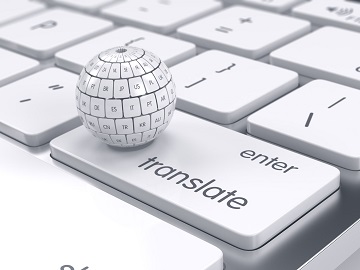
Digital Health transformation has been underway for some time now. It’s changing health and care processes, dramatically improving the availability of data, information, and knowledge. There is, however, a barrier that exists between many caregivers and their patients – language – the fundamental requirement for effective communication. Effective communication ensures better outcomes, a safer patient journey, higher satisfaction for all participants, and lower costs.
In 2015, the Census Bureau identified that more than 350 languages are spoken in the US. In 2018, it was reported that 67.3 million people in the United States speak a foreign language at home. Of those, 25.6 million or 38% told the Census Bureau they speak English less than very well. Lack of a common language in health care communications is a real problem for health care delivery.
As the grandson of immigrants who didn’t speak English when they arrived in the US, I personally witnessed the difficulty of communicating even common concepts, not to mention challenging medical concepts, to someone in an unfamiliar environment, like our care delivery venues, particularly when they’re ill and/or confused.
It’s hard enough for many people to communicate in a language other than their native language. It’s even more difficult in the health care environment when a person is ill, in unfamiliar and strange surroundings where professional jargon is used instead of common language.
When planning digital system deployment, language capability is critical. Are there solutions? Yes, but there are some limitations and challenges with all the solutions. Sadly, StarTrek’s universal translator is not available, yet. I’ll list some options that are available now. iTranslate offers both apps and other products that can translate 100+ languages. They claim the apps comply with HIPAA, GDPR, and CCPA. One of their offerings does voice, not just text, translation in real time between 2 devices. Nyxcore has Easy Language Translator apps for Android (not iOS devices) that can do text-to-speech and speech-to-text for 100+ languages but requires an Internet connection and doesn’t do speech for all 100+ languages. Google has Translate that can translate words, phrases, web pages, and documents between English and more than 100 other languages. There are many others. The biggest challenge with each of these solutions is that none of them understand nuance and can be confused by unusual accents or idioms. That confusion could lead to misunderstanding and have dire consequences in a healthcare setting.
In lieu of digital devices, I’d suggest you consider what many health systems are using – interpreter services – some external, some internal. Interpreters are far more effective than translation software. These services typically use some type of voice and/or video connection to facilitate person-to-person, real-time interactions. Of those I’ve seen/heard, the most sophisticated, and at this time one of the most economical, efficient, and effective, is Voyce Global. They offer 24×7 video remote interpretation on readily available handheld devices which allows for care anywhere, any time. Their healthcare representatives all have clinical credentials and must be Voyce accredited at the end of a rigorous training process (that includes an etiquette curriculum) where more than 50% are rejected. Not only do their interpreters understand nuance, inflection, and idioms, they understand medical technology. It usually takes about 30 or fewer seconds to get connected. To ensure that family and friends can be involved, each Voyce session supports 9 parties (devices) on the same connection.
Simply sending a message doesn’t mean the sender heard or understood it. Regardless of language barriers, the most important thing a provider can do for a patient is to verify they understood what was said. Each communication between a provider and a patient should involve a test for comprehension that goes beyond, “Did you understand?” And that test for comprehension should go both ways. It’s essential for a patient to ensure that the provider understands what they are saying and what aspirations they have about the interaction.
Use technology-based translation services or preferably human-based interpreters to eliminate barriers to giving and getting the right care. When communicating regardless of language, test for comprehension to make sure that messages sent are understood by all parties involved in the health and care delivery processes. The processes must ensure there are multiple steps where questions can be answered in real-time. Better communication means safer care, higher quality outcomes, lower costs, less stress, and soaring satisfaction.
Let me end with an expression of my gratitude using a short, very important phrase from my native language, then reinforcing my appreciation by sharing the equivalent I learned in a variety of other languages.
Thank You. Gracias. Merci. Grazie. Arigato (ありがとう). Danke. Gamsahabnida (감사합니다).
Spasiba (Спасиба). Mahalo. Efharisto (ευχαριστώ). Āmeseginalehu (አመሰግናለሁ). Xièxiè (谢谢).
Shukran (شكرا). Toda(תודה)
Related Articles:
This blog is the 5th in a series. The first four are:
